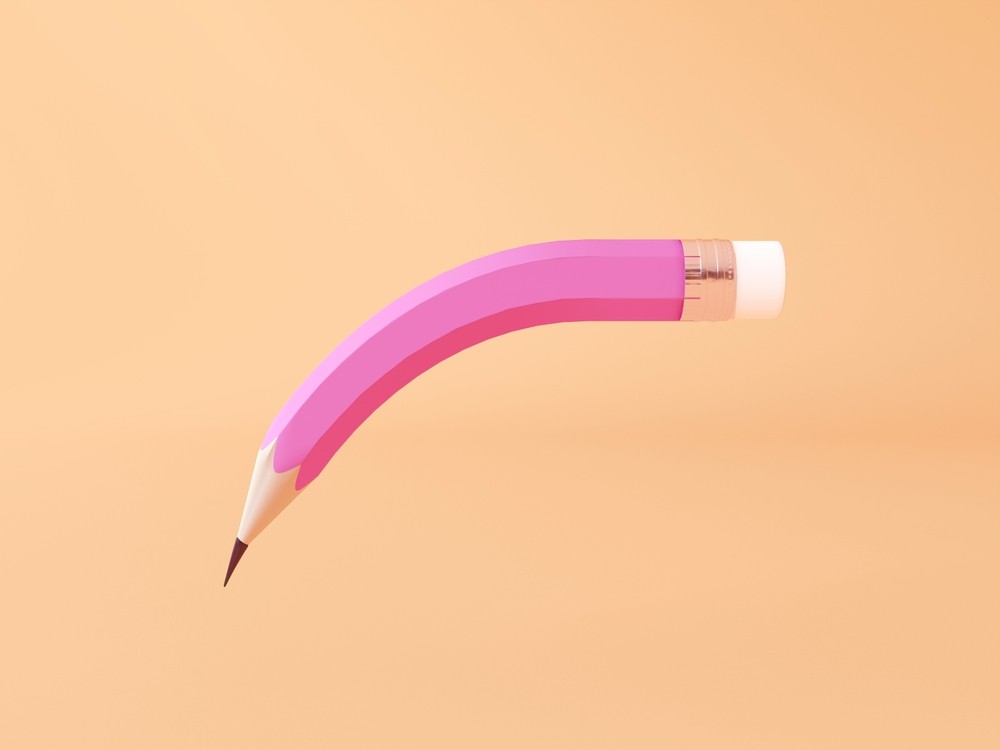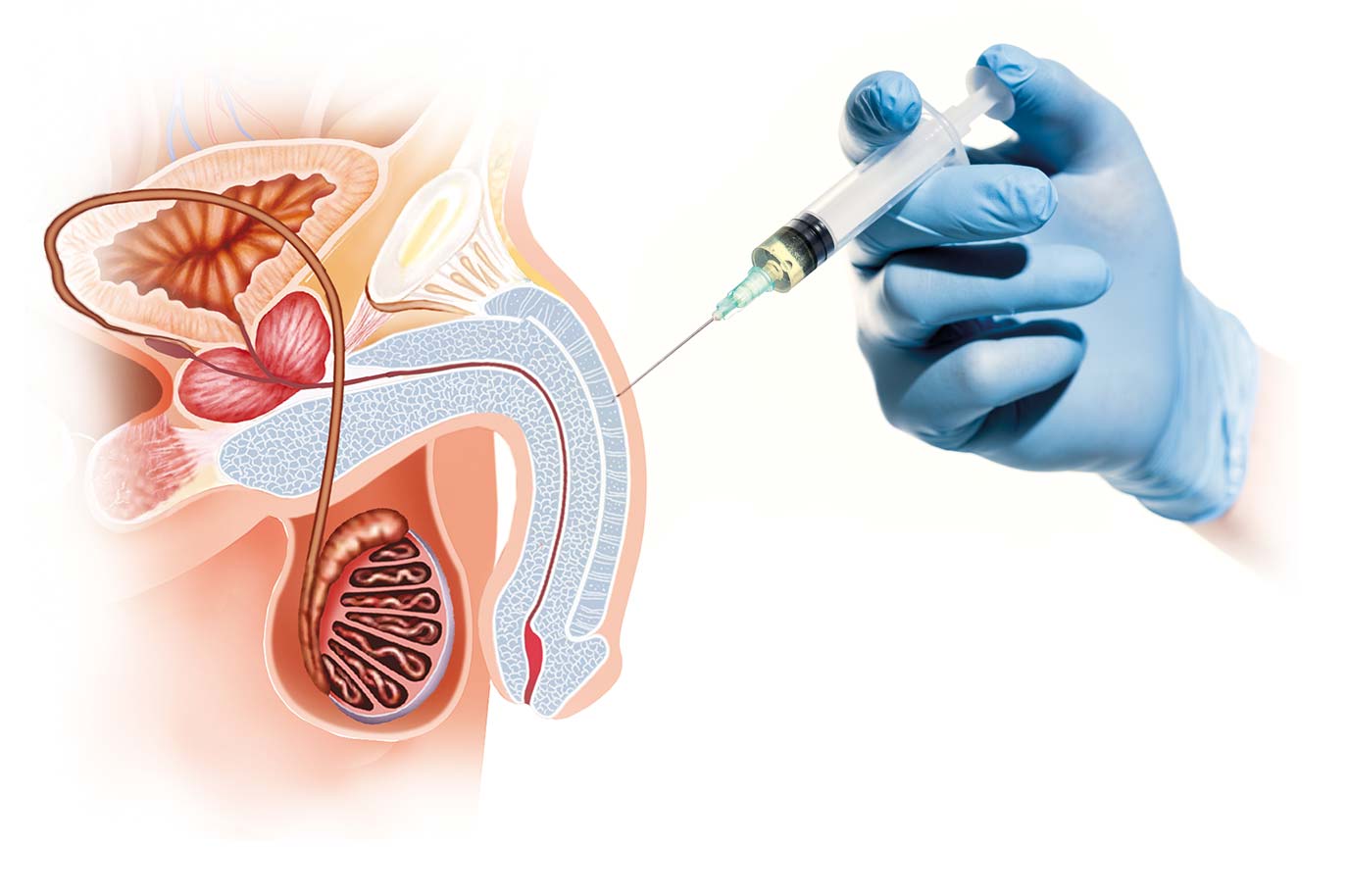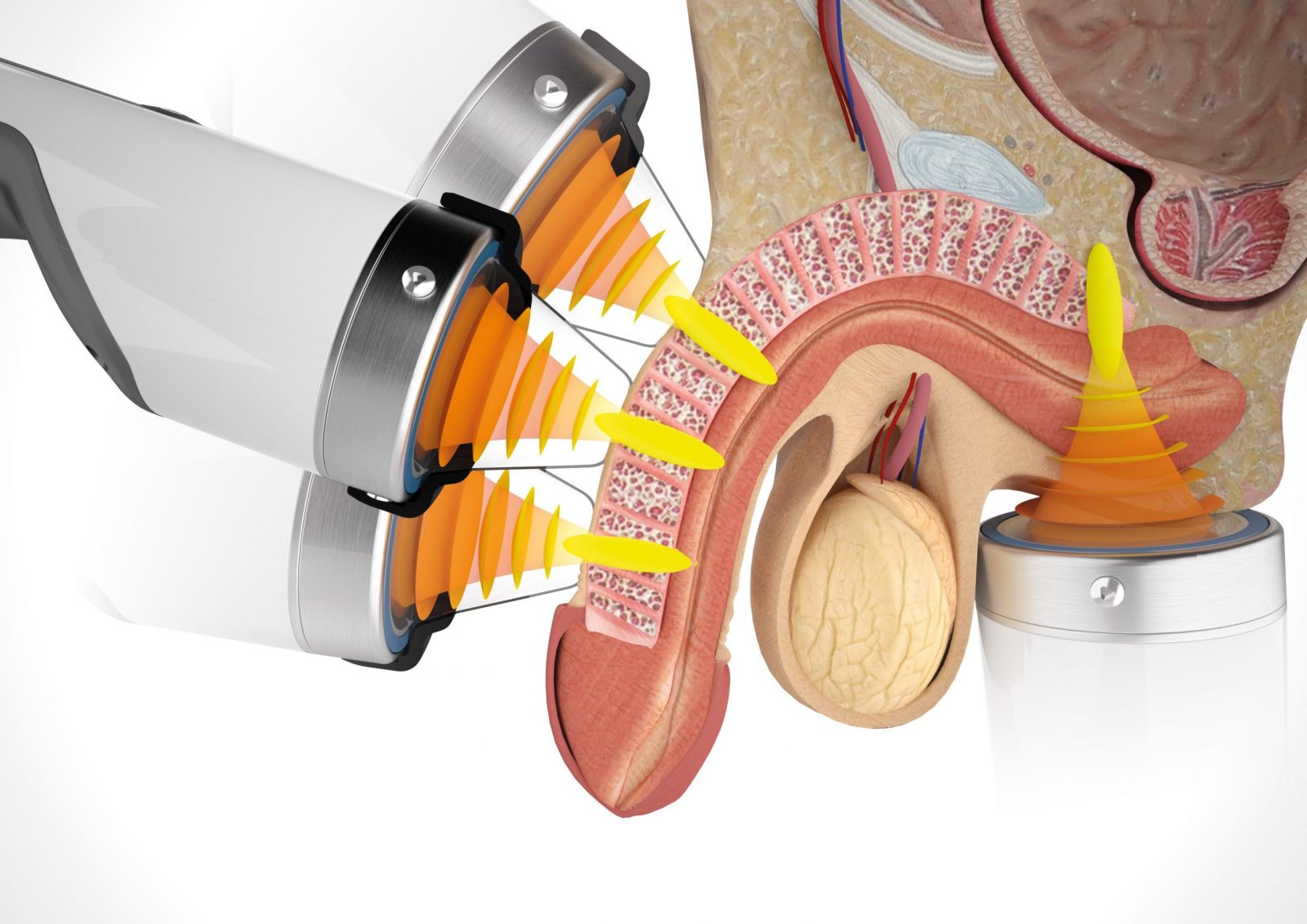If you have noticed a curved penis, you might be wondering if this is a normal variation or a concern that requires medical attention.
It is important to clarify that a certain degree of penile curvature is quite normal. Similar to the slight asymmetries found in our faces and bodies, a minor bend in the penis, either to the left or right, is generally not a cause for concern.
However, a pronounced curve or significant bending in a particular direction, especially if it causes discomfort or affects your sexual function, warrants careful consideration.
This type of curvature can be indicative of an underlying condition that may require medical intervention.
In the sections that follow, we will delve deeper into what a curved penis signifies, exploring the potential causes and factors contributing to its development.
Additionally, we will discuss the various treatment options available for addressing significant penile curvature, ensuring you have the information needed to seek appropriate care and support.
Contents
- 1 Curved Penis and Understanding Peyronie’s Disease
- 2 Distinguishing Peyronie’s Disease from Normal Curved Penis
- 3 Causes of Curved Penis: Understanding the Mystery
- 4 Determining Excessive Penile Curvature
- 5 Diagnosing a Curved Penis: The Process
- 6 Understanding Congenital Penile Curvature
- 7 Methods for Correcting Penile Curvature
- 8 Coping with Penile Curvature
- 9 Takeaway
- 10 Free Online Consultation
Curved Penis and Understanding Peyronie’s Disease
Having a slightly curved penis is quite normal. Whether erect or flaccid, your penis might lean to the left or right, which is generally not a cause for concern unless it hinders sexual activity or causes discomfort.
Peyronie’s disease is the primary culprit behind the significantly curved penis. This condition arises when plaques accumulate inside the penis, hardening the tissue and leading to a noticeable bend during erection.
This curved penis in Peyronie’s disease often results from an injury. Such injuries can occur during sexual activities or from unrelated incidents that damage the penile tissue.
A less common cause is congenital curvature, where the curvature is present from birth. This condition is rare, affecting less than one percent of men, according to studies.
Treatment for curved penis is not always necessary. But if the curvature disrupts your sexual, physical, or mental health, medical solutions are available to address the issue.
| Read more: Erectile dysfunction Treatment in Turkey
Distinguishing Peyronie’s Disease from Normal Curved Penis
Peyronie’s disease is often the cause of severe curved penis, a relatively common condition affecting men of various ages.
This occurs due to the formation of scar tissue in the tunica albuginea, the tough sheath around the erectile tissue in the penis, To understand this, consider the penis’s anatomy:
The penis consists of three cylindrical structures. Two of these are the corpora cavernosa, spongy erectile tissues that engorge with blood during sexual arousal, leading to an erection.
The third structure houses the urethra, the channel connecting the bladder to the penis, and plays a role in ejaculation by squeezing the vas deferens (the ducts that carry sperm from the testicles).
All these cylinders are enveloped by the tunica albuginea, a fibrous tissue composed mainly of collagen and elastin, key proteins in connective tissues.
During an erection, the tunica albuginea helps trap blood within the corpora cavernosa, maintaining the erection by preventing blood from returning to the circulatory system.
Peyronie’s disease manifests when scar tissue forms in the tunica albuginea. This scar tissue, being predominantly collagen, is rigid and less flexible, affecting the penis’s shape during an erection.
If you have scar tissue plaques in your tunica albuginea, they can cause the penis to curve significantly during an erection.
The curved penis from Peyronie’s disease is markedly different and more pronounced than the minor natural curvature many men experience.
It’s also more likely to cause discomfort due to the formation of hard lumps on the penis.
Other notable symptoms of Peyronie’s disease include:
- A visible curve in the penis even when flaccid
- Alterations in the penis’s shape, such as shortening
- Pain during sexual activities, including intercourse and masturbation
Causes of Curved Penis: Understanding the Mystery
The exact cause of Peyronie’s disease remains somewhat elusive to experts. Current research, however, points towards physical trauma or autoimmune disorders as potential culprits.
Physical injuries, such as those sustained during vigorous sexual activity, sports incidents, or other accidents, are known to contribute to the development of Peyronie’s disease.
Additionally, autoimmune and connective tissue disorders linked with Peyronie’s disease include conditions like plantar fasciitis, scleroderma, Behçet’s disease, Sjögren’s syndrome, and systemic lupus erythematosus (SLE).
Your risk of developing Peyronie’s disease may be higher if you:
- Have a family history of Peyronie’s disease.
- Are suffering from an existing autoimmune or connective tissue disorder.
- Engage in intense or rough sexual activities that could injure your penis.
- Have diabetes, erectile dysfunction (ED), or have undergone treatment for prostate cancer.
The likelihood of developing Peyronie’s disease also tends to increase with age, making it more prevalent in older men.
For a more comprehensive understanding of the risk factors associated with curved penis, our detailed guide on Peyronie’s disease offers further insights.
| Read more: Penis Enlargement Surgery in Turkey
Determining Excessive Penile Curvature
Assessing whether your curved penis is excessive hinges on two straightforward questions: Does an erection cause pain? Is it difficult to achieve an erection or engage in sexual intercourse?
If your answer to either question is a resounding “yes,” then the curvature is likely excessive.
As previously mentioned, a perfectly symmetrical penis is rare. It’s normal for a penis to lean slightly to the left or right and to angle upwards or downwards.
Peyronie’s disease, however, often results in a more pronounced and noticeable curvature.
This might manifest as a significant bend in a particular direction or a sharp angle, creating an atypical appearance.
There isn’t a set minimum curvature degree for diagnosing Peyronie’s disease. A study in the Journal of Urology reported that:
- About 43% of men with Peyronie’s disease exhibit less than 30 degrees of curvature.
- 38.8% have a curvature between 31 to 60 degrees, and 18.6% experience over 60 degrees of curvature.
- The most common forms of curvature in Peyronie’s disease are dorsal (upward bending) and lateral (sideways bending).
Peyronie’s disease progresses in two stages. In the initial, or acute phase, inflammation and plaque formation within the tunica albuginea lead to increasing curvature and pain.
After 12 to 18 months, the disease usually enters a chronic phase. Here, the curvature stabilizes and doesn’t worsen.
While pain may decrease during this phase, erectile dysfunction might emerge or intensify.
Diagnosing a Curved Penis: The Process
For diagnosing Peyronie’s disease, our healthcare professionals will start by inquiring about your recent symptoms and overall medical history.
They’ll conduct a physical examination to check for plaques or any abnormalities in your penis that might be causing pain.
In certain cases, an imaging test might be utilized to gain a clearer understanding of the plaques’ location within the penis.
If you’re experiencing a curved penis and suspect it might be Peyronie’s disease, the recommended step is to consult us, and we at Istanbul urology clinic will be able to help you in this matter.
It’s important to provide detailed and accurate responses for us or to your healthcare provider’s questions.
Understandably, discussing issues like penile curvature, painful erections, or other related symptoms can be challenging, but remember that we are here to assist you. There’s no need for embarrassment in these discussions.
The more forthcoming and detailed you are, the better your healthcare provider will be able to diagnose and assist you effectively.
Understanding Congenital Penile Curvature
Congenital penile curvature (CPC) refers to a noticeably curved penis present from birth or early life.
Fortunately, it’s a relatively uncommon condition, affecting only about 0.5 to 10 percent of the male population, with even fewer experiencing a curve severe enough to warrant clinical concern.
CPC differs from Peyronie’s Disease in a significant way: it does not involve the development of scar tissue within the penis.
Additionally, unlike Peyronie’s, congenital curvature typically remains stable over time and does not worsen.
Most men with congenital penile curvature become aware of it during puberty or early adulthood. When the curvature is mild, it generally doesn’t necessitate active intervention.
In cases where the curvature is more pronounced, it could impact sexual performance or self-esteem.
If this is the case, seeking medical advice is advisable. Consultation with a healthcare provider can help determine the best course of action, whether it’s monitoring the condition or exploring treatment options.
Methods for Correcting Penile Curvature
Correcting a curved penis varies depending on its severity and type, and there is no universal treatment that suits everyone.
Medical professionals employ a combination of surgical and non-surgical techniques to address significant penile curvature.
ESWT for Curved Penis
One of the major non-surgical treatments for Peyronie’s disease, especially in minor to medium cases, is Extracorporeal Shock Wave Therapy (ESWT), also known as shockwave therapy.
This innovative method uses focused shock waves to target and break down the plaque in the penis. ESWT is effective in reducing curvature and alleviating pain, making it a preferred choice for early-stage Peyronie’s disease.
The therapy’s non-invasive nature and its ability to improve penile health without surgical intervention are key advantages.
Medications:
Injections like collagenase (Xiaflex), interferon-alpha 2b, and verapamil are used to dissolve plaques and reduce curvature.
Collagenase is particularly notable as the only FDA-approved treatment for men with a significant penile curve. Interferon-alpha 2b and verapamil injections also contribute to plaque reduction and pain management.
Vacuum and Traction Devices:
While vacuum devices offer a theoretical approach to stretching penile tissue, traction devices or penis stretchers are supported by research and have shown effectiveness.
Consistent and prolonged use of these devices is necessary to achieve noticeable improvements in penile straightening.
Together, these non-surgical options provide a comprehensive approach to managing Peyronie’s disease, offering patients various methods to address their condition based on severity, personal preferences, and treatment goals.
Surgical Interventions for Penile Curvature
In instances of extreme penile curvature, particularly those related to Peyronie’s disease, surgical intervention might be the only effective solution.
This involves removing plaques from the penis and/or enhancing the ability to achieve a normal erection. It’s crucial to note that surgery for correcting penis curvature is typically considered only after the plaques have ceased developing.
Surgery might be recommended to address Peyronie’s disease if you:
- Experience pain during erections or sexual activity.
- Show persistent Peyronie’s disease symptoms without improvement over time.
- Encounter physical difficulties or inability to engage in sexual intercourse due to the curvature of the penis.
A variety of surgical methods are employed to correct penile curvature and/or alleviate discomfort associated with Peyronie’s disease.
These methods can include grafting tissue from other body parts to the penis, replacing the areas with plaques, and plication, a process involving the removal of tissue to straighten the penis.
In cases where Peyronie’s disease coexists with erectile dysfunction or even any shortage of the penis, a penile implant might be the best to aid in straightening the penis during an erection with ability to restore or even add more size.
| Read more: Penile implant surgery in Turkey
Addressing Penile Curvature at Home: A Reality Check
This title might be somewhat misleading. As of now, there’s no verified method to significantly correct penile curvature from the comfort of your home.
However, there is ongoing research into the potential benefits of devices like vacuum and traction devices.
These are being studied for their possible effectiveness in reducing fibrous scar tissue and enhancing sexual health.
Currently, there is limited research available, but investigations are underway.
It’s important to note that there is no substantial evidence supporting the effectiveness of herbal treatments, massage, or other exercises in treating Peyronie’s disease or in reducing penile curvature.
Coping with Penile Curvature
It’s essential to recognize that a slight curvature of the penis is quite normal and typically doesn’t necessitate medical intervention or treatment.
For those with a curved penis, consider these points:
- Mild curvature is usually not a cause for concern. If the bend in your penis is minor and doesn’t result in any pain, discomfort, or difficulties during sexual activities, it generally doesn’t pose a health issue.
- However, significant curvature should be examined. If the curvature is pronounced and either complicates sexual intercourse or causes pain during erections, consulting with a healthcare provider is important.
- Penile curvature can often be treated. Treatment options may include medications or surgical procedures, as advised by your healthcare provider.
- If you suspect your erectile dysfunction is related to penile curvature, it’s advisable to seek a
Takeaway
A mildly curved penis is a common and sometimes even preferred characteristic. As long as it doesn’t cause discomfort, hinder urination, or disrupt sexual activity, it generally doesn’t necessitate medical intervention.
Penile curvature might be a congenital trait or develop over time due to various factors, including certain conditions or injuries.
It’s important to seek medical advice if the curvature appears suddenly, progressively worsens, or leads to intense pain or challenges in sexual performance or urination.
Free Online Consultation
Peyronie’s Disease Treatment in Turkey
Peyronie’s Disease Ultimate Understanding
Penile Curvature & Erectile Dysfunction
How to Fix a Curved Penis in Turkey?
Post-Op of Penile Lengthening Surgery in Turkey
Androskill: Treatment of Erectile Dysfunction with Stem Cell Therapy
Broken Penile Fracture Treatment in Turkey
What is Kidney Cancer?
Post-Op of Penile Lengthening Surgery in Turkey
Individuals seeking penile lengthening surgery often do so to enhance their sexual experie…
DON'T MISS
Erectile Dysfunction Treatment in Turkey
Erectile dysfunction treatment in Turkey is gaining popularity due to its high-quality medical services and affordable prices. In Turkey, various hospitals and clinics such as Istanbul Urology Clinic offer a range of erectile dysfunction treatment, including medication, hormone therapy, psychological counseling, and advanced surgical and non-surgical options.

























